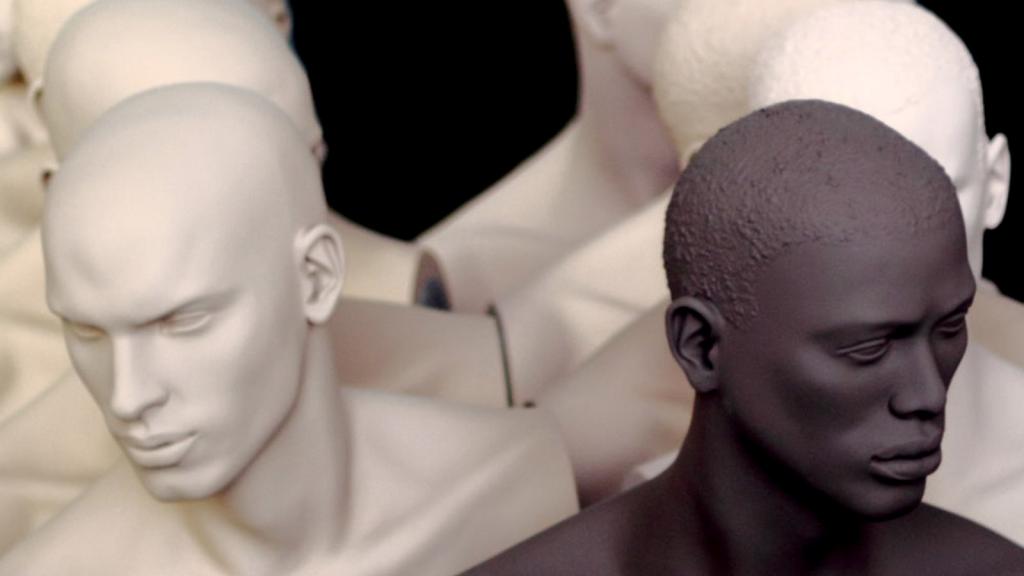I stare at the beaker of cloudy water, trying to make sense of the slow swirl of particles inside — a mixture of small red specks and pale threads.
“Those white squiggles,” Jim Sweeney says, pointing with just the edge of his fingernail to help orient me. “Those are the post-larvae.”
He means, those are what I’ve come to see: shrimp.
Specifically, they’re Litopenaeus vannamei, or Pacific White Shrimp, a.k.a. everyone’s favorite all-you-can-eat buffet offering. As president of Sunrise Capital’s shrimp farm on the Hawaiian island of Kauai, Sweeney will oversee those white squiggles as, over the next six months, they are gradually decanted into larger and larger tanks, then into the shrimp version of an indoor lap pool, and finally into big, outdoor ponds. In the process, they will grow from a fraction of an inch to over six inches in length and thicker than my thumb.
At some now-inconceivable point in history, shrimp were a rarity, or an oddity, depending on your perspective. Some were trawled out of the ocean and eaten locally, but it was only after flash-freezing made them transportable that a fishing boom turned shrimp cocktail from a pricey novelty in a margarita glass to a bulk appetizer in a punch bowl.
Today, shrimp are a global commodity — there’s even a shrimp futures market. Wild-caught animals, however, only make up around 45 percent of those consumed by hungry humans. Some 3.9 million tons of shrimp are raised in farms around the world annually, making up what amounted to a $19.4 billion industry in 2012. The vast majority of those shrimp are raised in small developing countries in Southeast Asia or Central America, and most are exported direct to wealthier countries like the U.S. or China.
In the U.S., shrimp are far and away the most popular seafood. Americans eat 600,000 tons of the wigglers — that’s 1.2 billion pounds — annually, for an average of four pounds per person. But our happy hour hors d’oeuvre comes with some heavy green guilt: All that bycatch and trawled-over seafloor, all those mangroves sacrificed to massive farming operations, all in the name of something that tastes good in a cocktail sauce.
On the other hand, maybe it doesn’t have to be that way. Shrimp are more efficient at turning their food into tasty protein than, say, cows or pigs are at turning corn into cold cuts. They are cold-blooded, omnivorous scavengers without much sense for personal space. In a world with limited resources — that is, the one we’re in, plus the increased pressure of climate change and population growth that the future brings — shrimp might be one of the greenest livestock in the stable.
If people love to eat them, that’s a good start. The next step is to find a more sustainable way to get them from post-larvae to plate.
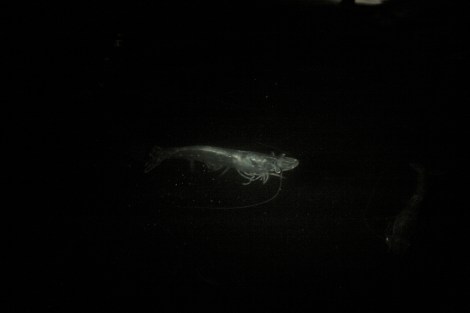
Amelia Urry
The Sunrise Capital shrimp farm takes up a small allotment of a former sugar cane plantation, where the main road peters out on the flat, sunny western edge of Kauai. A sugar mill still stands on stilts in the distance, looking like an assortment of metal funnels in 20 different shades of rust. Besides the shrimp farm and a nearby missile range, the place feels as though it has been ceded to local beachgoers.
When I arrived at the farm on a recent morning, Jim Sweeney greeted me at the gate, along with Bill Dunwell, the farm’s hatchery manager. They handed me a pair of plastic overshoes, meant to protect the shrimp from any microbes I might track in. It is important to shelter the little ones from infection, as they’ll be sold at a premium to stock shrimp farms all over the world, providing around 80 percent of this farm’s income.
After showing me the post-larvae, Dunwell and Sweeney take me to the maturation unit, or what I like to think of as the crustacean honeymoon suite. It’s a dim room, with several tubs the size of generous jacuzzis. Dunwell chases a few adult shrimp around one of the circular tanks with his flashlight beam. They glide, pale grey and streamlined, across the dark bottom of the pool. When he finds one swimming after another, like a low-key game of tag, Dunwell explains that these ones are beginning to exhibit mating behavior. In another month or so, they will begin to spawn.
The hatchery facilities are small, with only a few covered buildings to house the smallest shrimplings, and four quarter-acre ponds out back, where the shrimp spend a few months growing before they are shipped out. But the hatchery’s size belies its importance. Establishing a productive genetic line takes a lot of initial investment and time. The farm staff are constantly tracking and interbreeding 30 different genetic families of shrimp, assessing each line for disease resistance, growth rate, and spawning performance. The top performers get to pass on their traits to the next generation.
“Good old-fashioned breeding,” Sweeney tells me. Just like any other farm animal, shrimp are only as productive as their genes allow. If becoming more sustainable means making more with less, DNA is a good place to start.
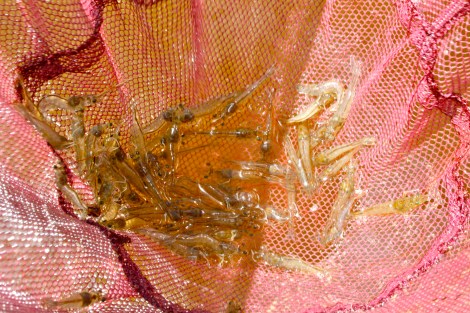
Amelia Urry
When the Kauai shrimp farm started up in 1997, under a company called Ceatech, its focus, like the rest of the industry, was on intensive production: How to turn out as many shrimp in as little time as possible. Each of the farm’s 40 one-acre ponds was stocked with around 400,000 animals, producing a total of about 1 million pounds of shrimp a year. In the process, the farm was dumping some 10 million gallons of effluent — erm, you know, shrimp water — into the ocean. Locals complained of foul-smelling water at nearby surf spots, which is unpleasant, yes, but also dangerous if sharks get a whiff that eau de dead fish.
In 2004, the farm was hit by white spot syndrome, a virus then making its rounds of the world’s shrimp farms. Intensive farming has always been susceptible to disease, and shrimp are especially vulnerable because of their primitive immune systems. The virus frequently wiped out all the shrimp in a given pond, in just a matter of days. Big farming operations in Southeast Asia fell like dominoes; this hemisphere saw outbreaks in U.S. farms on the Gulf and big operations in Central and South America. Hawaii’s geographic isolation had made it seem at first like a haven from the problems plaguing the rest of the industry, but it turns out humans and microbes really are the world’s great opportunists — and they like to travel.
“That pretty much did them in,” Sweeney says of the farm owners at the time of the infection. Sweeney, who was managing the show back then, too, managed to stay on with three or four other employees — all the owners could afford to keep on the payroll. Another company stepped in to try to salvage the farm, another outbreak leveled it. Things were not looking good.
In 2009, an aquaculturist named George Chamberlain arrived, with a tech company called Integrated Aquaculture (now just iAqua). Chamberlain wants to make shrimp farming both more sustainable and, by avoiding disease and waste, more profitable. He bought the Sunrise Capital farm and the team started again from scratch. They brought in all new shrimp lines, and hired a geneticist. They built the breeding houses and the raceways. They started selling broodstock to farms in other parts of the world.
At the same time, the industry as a whole was having its own come-to-Jesus moment. The mangrove bulldozing that earned shrimp aquaculture its early demerits also proved to be its downfall: The muddy, open ponds were impossible to defend from infection. Shrimp farmers were going bankrupt when their whole crop went belly up. It became clear that closed, inland ponds with recirculating water systems were not a luxury; they were a necessity for anyone who wanted to stay in the biz.
“Farms are starting to operate in that way as a more common practice,” particularly in the U.S. and Thailand, explains Peter Bridson, research manager of shrimp aquaculture at the nonprofit Monterey Bay Aquarium Seafood Watch. In addition to white spot, a new disease called “early mortality syndrome” is, as behooves its name, now killing rampantly among the shrimp ponds of the world.
Sealing ponds is all about business, Bridson says, but the ecological savings are nothing to sneeze at: “From an environmental perspective, that means they’re treating their own waste, rather than flushing it into the environment, there’s a lower chance of escapes from the farms, and less chance of disease transfer back out into the environment from the farms as well.”
As for the mangroves, Bridson says, “There’s certainly less clearance of that habitat happening now.” Under the old model, unlined ponds quickly acidified from contact with mangrove forests’ acid-sulfate-laced soil. And once infected with a disease, these ponds were not easily disinfected. For both reasons, farmers often abandoned ponds and moved on to a new patch of forest. Sealed ponds mean that itinerant aquaculture can settle down in one place for good.
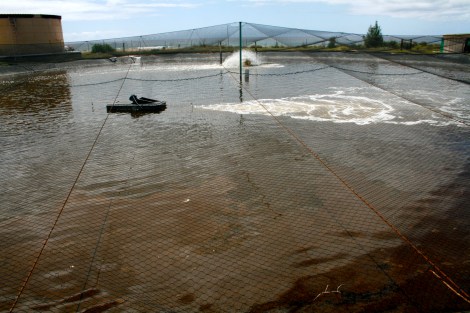
Amelia Urry
Meanwhile, back on the ranch, Sweeney is driving me from the hatchery to the farm, past some empty ponds where a flock of shorebirds and a single orange cat are gathered to drink from rainwater pooled on the black plastic. The farm is only operating at half-capacity at the moment, but they have started restocking the old ponds now that many of the particulars of the new business model have been worked out.
For example, the stocked ponds are now each tented over with netting to keep birds, a potential disease vector, away. Under iAqua’s ownership, Sunrise Capital scaled back to around half its former production density, with fewer than 200,000 animals per acre-pond. Instead of churning out frequent crops of smaller shrimp, the farm decided to devote more time and resources to growing bigger shrimp, which could be sold as “sashimi grade” for a higher price, especially in Japanese specialty stores. This is the usual trade that finances organic and sustainable agriculture — less quantity for more quality — and it gave the farm some room to experiment with other green techniques.
In this case, literally green. The surface of each pond is blotted with a swirling, brownish algal bloom. At first, I make the mistake of asking about the “scum,” but Sweeney explains that this is “biofloc,” an oxygenated microbial mix that is much more wholesome than it looks. Instead of settling at the bottom of the tank to decompose anaerobically, organic matter circulates constantly through the pools, supplementing the shrimps’ diet and fertilizing the algae, which in turn oxygenates the water. Some of the ponds even support a second crop, algae-filtering clams, that grow on cages near the surface of the water.
As a result of this recirculation, the farm uses significantly less water than it used to. While Sunrise Capital has a permit to discard up to 30 million gallons of water a day, right now, with half the farm running, it only drains about a million gallons. That’s 5 percent of its total volume, though Sweeney says the goal is to end up at zero water exchange.
The effluent from the ponds is funneled into a sandy-bottomed drainage trench behind the farm, where saltwater tilapia feed on the organic matter as the water gradually settles out. The tilapia, along with some grouper and Hawaiian moi stocked in test ponds, are more culinary experiment than cash crop, but they might point a way toward a more diverse, integrated aquaculture ecosystem of the future.
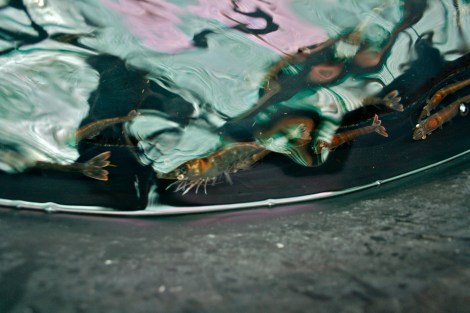
Amelia Urry
The biggest hurdle still facing aquaculture’s sustainability has to do with food. Raising marine animals often means killing a large number of other marine animals first — usually from the small, numerous species of fish that make up the wide base of the ocean’s food chain but are of little interest to anchovy-averse humans. These “trash fish” are turned into fish meal and fish oil, which in turn can be processed into commercial fish food. Overfishing is a big concern; important populations have collapsed before and the effects on the ecosystem ripple outward. Carnivorous fish like salmon and tuna are especially voracious predators, so their farmed cousins traditionally require several pounds of wild fish to produce a pound of prime fillet.
It is also worth mentioning that the prices of fish meal and fish oil have been very high lately, as the steep demand for fish oil supplements limits the supply available to the burgeoning aquaculture industry. If a more sustainable option is available, even with a high price tag, it could be worth it as long as the cost is constant and reliable.
Sweeney takes me to the farm’s nutrition center, where I meet Bonnie Mulligan, director of the small feed research project. She shakes my hand and tells me to watch out for the wasps; they’ve been more active than usual today.
Under the pavilion roof, several rows of raised tubs hold shrimp in different feed trials. To address the challenge of replacing fish meal in shrimp feed, researchers have turned to vegetable proteins or animal byproducts or even algae-based feeds. Sunrise Capital received a grant from the Soy Bean Association to see if it would be possible to raise shrimp on an all-soy diet. Of course, soy is a whole ‘nother problem, involving industrial monoculture, and all the chemical, water, and land-use problems that come along with it. But adapting shrimp to vegetarian diets is a promising step away from wild fish. Sweeney explains that the farm has even found a genetic component that makes some shrimp more successful on the fish-free diets than others.
It helps that shrimp are the insects of the sea — opportunistic omnivores who can turn unpalatable gunk into America’s favorite seafood. “Fish are like cats, they like to turn up their nose,” Mulligan, clearly a dog person, explains. “Shrimp are more forgiving.”
So far, there is still some fish meal and fish oil left in the commercial feed that Sunrise Capital feeds to its stock. There is a consumer benefit, after all: The more fish oil, the more omega-3s the shrimp will have to pass on. This, too, can be controlled by replacing the fish meal for most of the shrimp’s growing period, then turning up the fish oil during the finishing period — the last four weeks of growth before the shrimp are harvested.
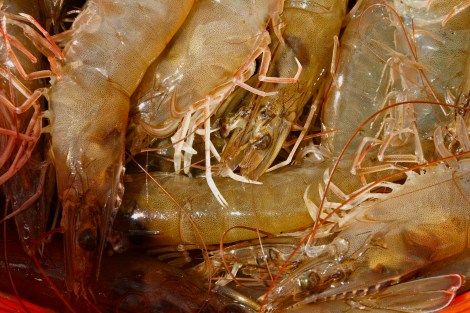
Amelia Urry
Here’s where the big promises of sustainable aquaculture butt up against the reality. While big advances in feed and water use can reduce the impact enormously, even the greenest operations start to look grim when you look at the big picture.
While the reduced amount of fish oil and fish meal in feed is undoubtedly good, some is still a lot — millions of tons of it a year — for the industry as a whole.
“When you have this question about what’s sustainable and what’s not sustainable, the scale is often a really big challenge,” says Bridson of Seafood Watch. “Even though [shrimp farming] uses relatively small amounts on a production basis, there’s a huge amount of fish that’s still going into producing farmed shrimp” globally.
Similarly, even a model with near-zero water exchange can have a significant footprint when multiplied across thousands of acres. “It’s very different to have one farm in that area, in Kauai,” he explains, compared to “some of the bigger shrimp farming places in Southeast Asia or Central America where there tend to be lots of farms bordering each other, and a much greater potential for some kind of cumulative impact.” Plus, all that land, even if not carved out of coastal mangrove forests, still adds up.
It’s all about frame of reference. Compared to the waste and resource-use of a contemporary CAFO for cows or pigs or chickens, shrimp farming is downright emerald-hued. An acre of shrimp farm can produce 10 times more protein than an acre of cattle grazing land, without competing with us for freshwater in the meantime. Compared to outsourcing the complicated work of recycling waste and food to the ocean, raising a shrimp on land is always going to be a little less than ideal. But seeing as we are already threatening the ocean from all directions, moving toward multitrophic, low-impact aquaculture and away from intensive agriculture is likely a net positive.
George Chamberlain is realistic about what he is trying to do with Sunrise Capital and with iAqua in general. “There’s still a long way to go. It’s not that we’re doing anything in aquaculture that’s revolutionary. It’s the same discipline that’s required in all the forms of agriculture, it’s sanitation, it’s genetics, it’s nutrition, management,” he says. “I think the key is to realize this is a young business and we’re all still learning. We try our best, we have high integrity and we try to do the right thing — but we do make mistakes.”
Or as Jim Sweeney puts it: “We try to be as green as we can be, but not at the expense of livelihood.”
For aquaculture, and for sustainable food systems in general, that’s the ultimate scale to balance.

Amelia Urry
Before I leave, I want to get a look at Sunrise Capital’s finished product, so Sweeney introduces me to Robert Kanna, the farm’s manager, who has worked with Sweeney for 30 of his 35 years in the business. In a straw hat and deep tan, Kanna looks more like a fisherman than anyone else I’ve seen on the farm. He holds a net, the edge weights hanging down with neat precision from his hand.
Ducking under the bird netting covering one of the ponds, Kanna throws the net into the air with a practiced spin. It flares and hits the water, sinking cleanly. Only as he pulls back do shrimp start to spring up in the air, jumping like popcorn kernels to get away. Those who don’t make it are hauled up the sloped side of the pond, and shaken out into a red plastic laundry basket. They are all giant, longer than my hand, still kicking spasmodically. One leaps free and flails on the grass; when I try to pick it up, it slips away with a powerful spasm.
I admit: It looks delicious.
